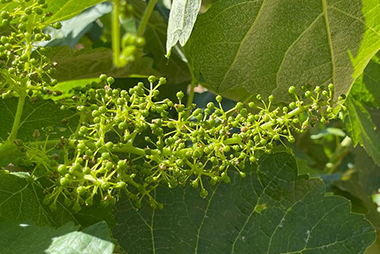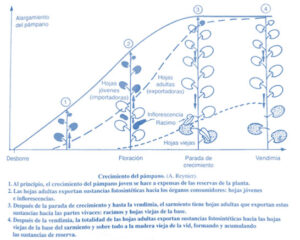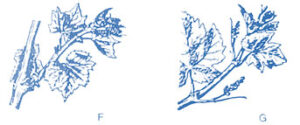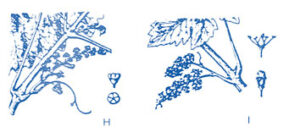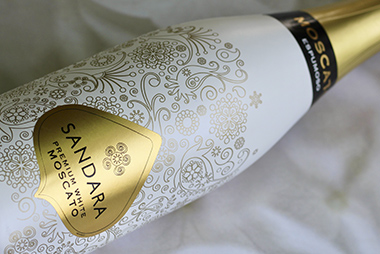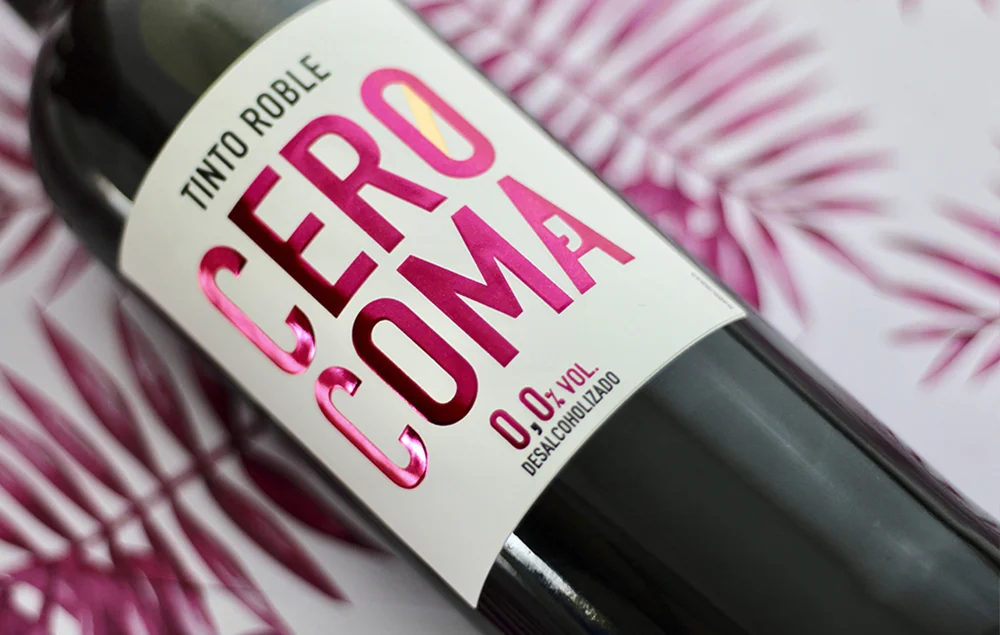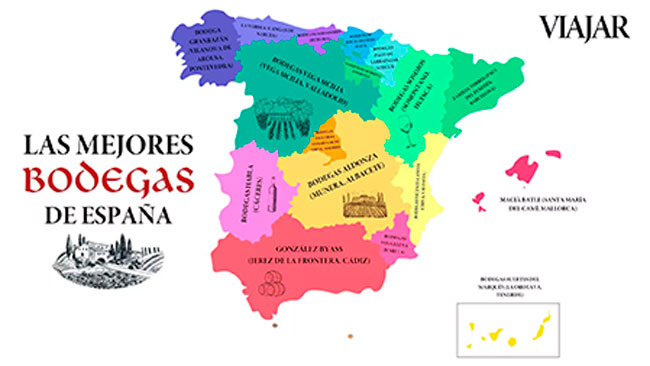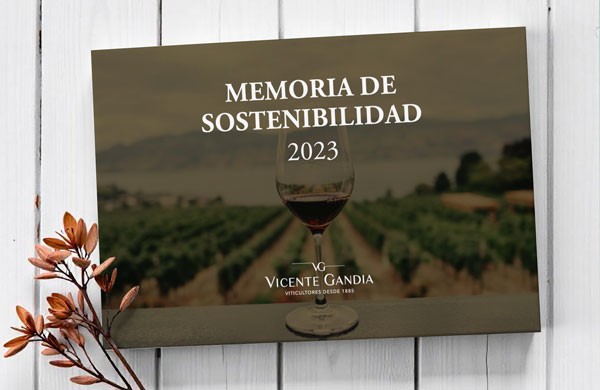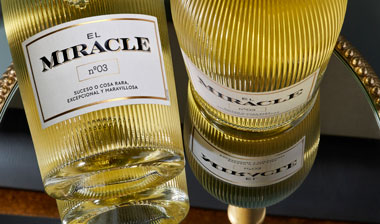In our Hoya de Cadenas and Casa Gallur estates, each year of its life, a vine records different phases that follow each other in a constant order and that, together, constitute the vine’s vegetative cycle. In a previous post we have already talked about the phase called “Crying” and in this post we are going to advance a few more phases, specifically we are talking about “budding” and “flowering”
The activity of the root is the first to occur and later the rest of the plant is activated. The process begins by mobilizing its reserves in the form of sap produced towards the tips of the buds. However, not all the buds sprout at the same time. The first to sprout are the last of the thumbs and non-arched stems of the plant, called front ones. This phenomenon is called “acrotony”, and it is understood as a survival mechanism of the vine, in order to spread as much as possible.
The sprouting of the buds is due to the multiplication and cellular thickening of their meristems. In principle, at low temperatures, cell activity is weak, but once the temperature rises, and with cumulative daily actions, swelling and opening of the scales occur.
This phenomenon occurs until reaching the threshold of apparent growth with average daily temperatures of 10ºC, also called “zero vegetative”. It is the moment of the appearance of the lint and subsequent development of the green tip.
These are the different phenological stages of budding:
From the shoot, the vine develops the miniature organs that are found in the meristems of these. At first, the development is done at the expense of the reserves and finally at the expense of the new leaves formed on the shoots. The following graph details the different phases of growth of the shoot:
The next phase in the vegetative cycle of the vine is the “flowering and fertilization” framed in the growth phase of the plant. It is when we begin to know the vitality and all the potential of the vine.
The inflorescences, which we could define as the stems of the plant that are going to have the flowers, appear a few days after the budding of the buds begins.
At first, they do so by showing a small green or red mass (depending on the variety). Later, when the first leaves spread to 4 or 5, the inflorescences are already more visible (phase F). Once this phase is over, the separate inflorescences appear (phase G).
Later, these inflorescences will develop and will be the embryos of future flowers, which develop from a point on the stem. This phase is called the “flower bud stage” (H phase). Finally comes the moment of flowering (phase I).
At the end of spring or beginning of summer, flowering arrives at our Hoya de Cadenas and Casa Gallur estates, which is when the average daily temperatures exceed 15ºC or 16ºC. It is at this time that the corolla regularly opens from its insertion with the calyx, causing the stamens and pistils to mature.
When the corolla falls off, the pollen sacs of the stamens open immediately and a cloud of pollen envelops the inflorescence, followed by the deposition of pollen granules on the rough surface of the stigma. Thanks to the sugary substance that the stigma secretes, the pollen tubes germinate. These pollen tubes elongate and descend through the cervix to the ovarian cavity, where they fertilize the ovules.
The fertilized ovules will grow to become the seeds or pips that will stimulate the development of the ovary to form the grain of the grape or berry.
The development of the inflorescences, which will later give rise to the fruits of the vine, or rather to the berries of the cluster, is called “curdling”. The fruit set rate is the number of berries remaining in the clusters in relation to the number of inflorescences from which they came. This percentage usually ranges between 60% and 80%. These losses or shrinkage are classified into the following types:
- Before flowering: not all the inflorescences of a shoot develop, with greater losses appearing on weak vines and sometimes affecting a part of the inflorescence (which can sometimes become a tendril).
- During flowering: The number of flower buds can be reduced very slightly, since the viable flowers at that time are perfectly formed. The phenomenon of “millerandage” can cause a significant defect in the maturation of the bunch. This phenomenon consists of the appearance of berries of different sizes and stages of maturation in the cluster. This phenomenon can have the following causes:
- weak germinative power of the pollen (very varietal and even clonal character)
- embryo sac defects
- low temperatures
- high humidity
- presence of polynicides
- boron deficiency
- excess or lack of vigor
- After flowering: The loss of flowers is accentuated by a non-fertilization of the flowers or by the detachment of fertilized flowers (a phenomenon known as bunch shifting), with these possible origins:
- Constitutional shift: due to vines with female flowers where it is necessary to artificially pollinate them (typical of Garnacha)
- Physiological drift: due to poor nutrition of the plant or a strangulation in its peduncle.
- Climate shift: due to unfavorable conditions of low temperature, high humidity, low light
- Pathological bleed: linked to certain diseases or deficiencies, such as short internodes, chlorosis, erinosis, lack of Boron, herbicides…
It is an important moment for the development of our vineyards and there are many factors that influence its evolution. In the viticulture of Vicente Gandía we try to control and measure the development of the vines so that in a few months, we have the best possible grapes with which to make our most valued wines.
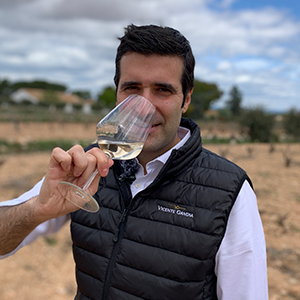
Article written by:
Pepe Hidalgo,
Technical Director of Bodegas Vicente Gandia

